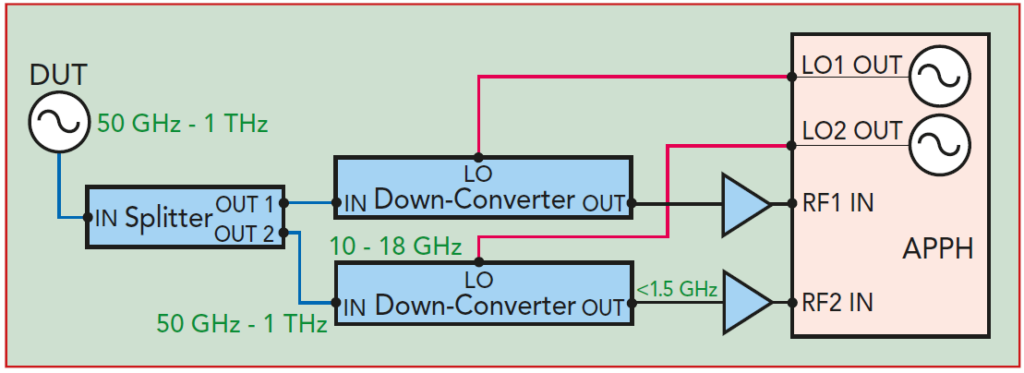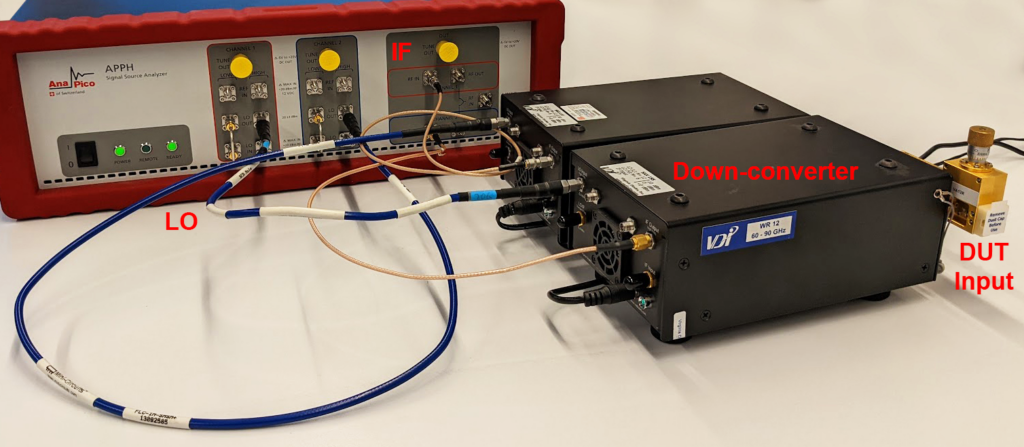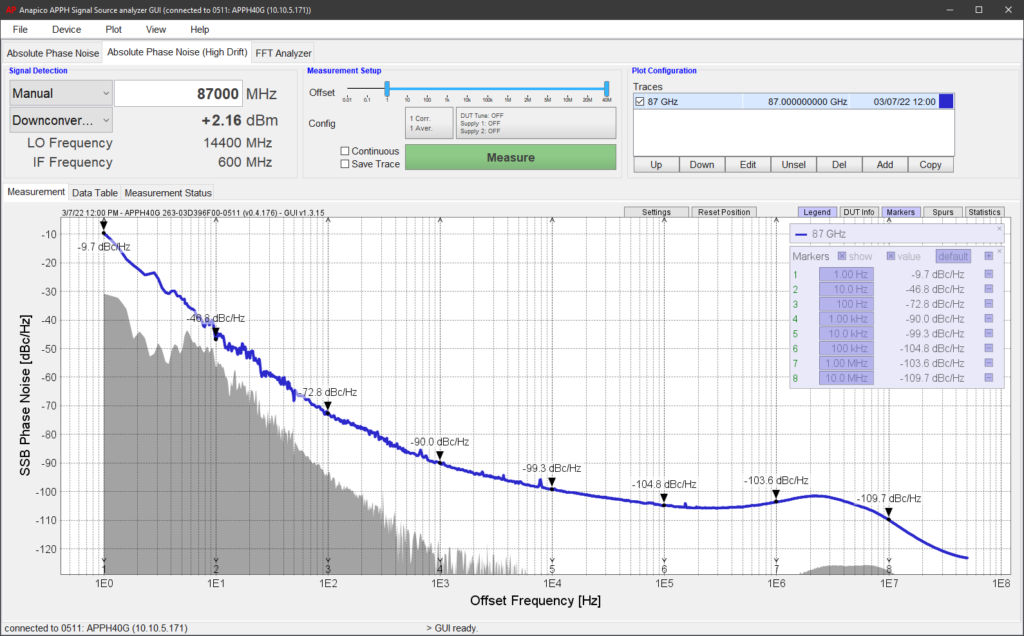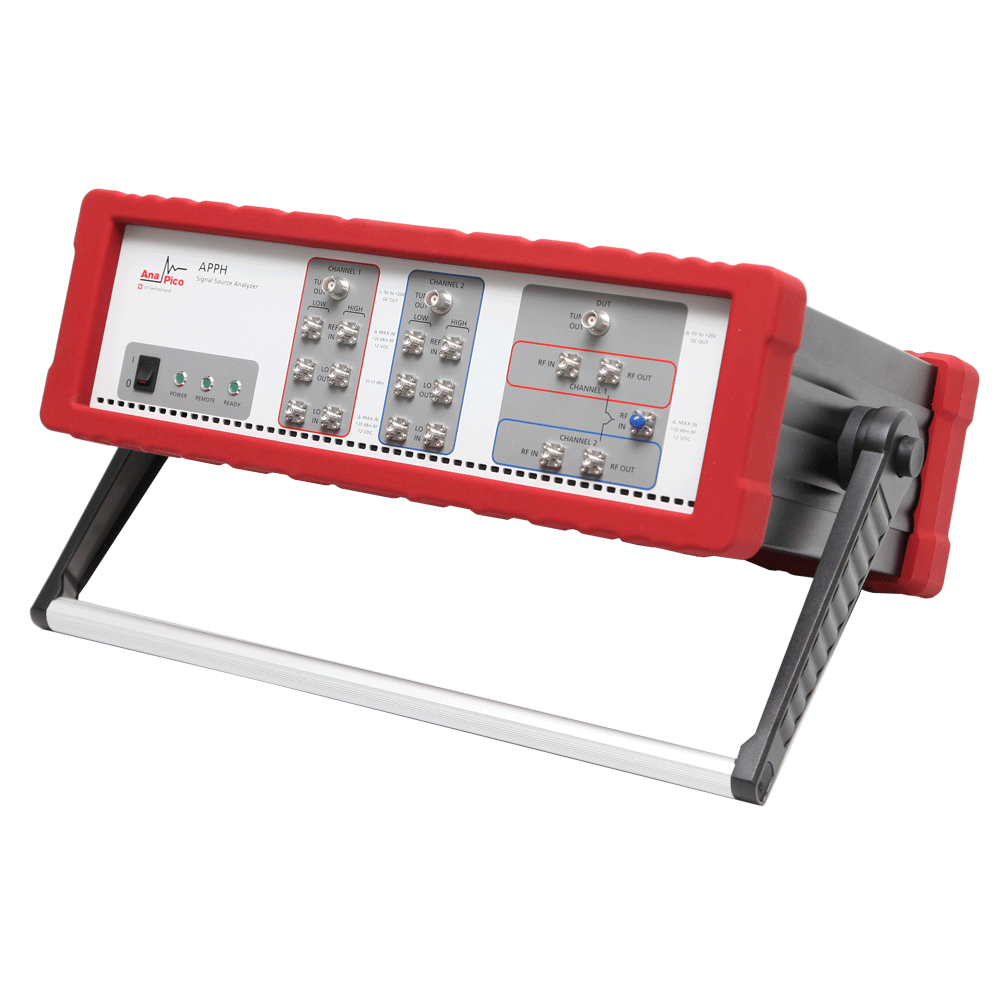APPH Phase Noise Analyzer
Increasing operating frequencies for radar and communications are pushing the test and measurement industry to provide solutions for characterizing phase noise in these upper bands. The development of test systems at mmWave and higher frequencies is important for research and will become essential for production testing. This article shows a cost-effective and highly flexible solution for measuring phase noise, demonstrating a practical approach that can be used into the sub-THz range.
MEASUREMENT PRINCIPLE
Current phase noise measurement systems work from the low MHz to GHz frequencies. Using frequency translation, the range can be extended. This can be done in several ways, yet the approach must preserve the noise characteristics of the original signal. Frequency dividers suffer from a higher noise floor and do not preserve the noise characteristics. They are typically not available for higher frequencies. Frequency converters require a low noise local oscillator (LO) signal; however, the noise of the LO will limit the phase noise sensitivity of the system.
A better approach is to split the signal from the device under test and down-convert it in two separate channels using independent LOs (see Figure 1). Even though both LOs are at the same nominal frequency, the two down-converted signals can be measured individually and cross-correlated to suppress the uncorrelated noise, i.e., the contributions from the down-converters and LOs. The uncorrelated noise is suppressed by a factor of 5log10(n) in dB, where n is the number of cross-correlations. This approach enables the phase noise to be measured with the better noise floor of a lower signal frequency and without unwanted additive phase noise from the down-conversion process.


Figure 1: Phase noise measurement based on cross-correlated down-conversion.
IMPLEMENTATION
Using this approach, a test setup for phase noise measurements in W-Band (75 to 110 GHz) is shown
in Figure 2. It uses AnaPico’s APPH40G signal source analyzer with option LO and down-converters
from Virginia Diodes (VDI). Using the AnaPico signal source analyzer, the low phase noise LOs can be supplied by the measurement instrument, which supports feeding two separate versions of the same signal into the two internal measurement channels. Range-selectable VDI harmonic mixers are used for the downconverters. They match the LO and IF measurement ranges of the APPH40G and can be used across their full W-Band input range.


Figure 2: Phase noise measurement setup using the AnaPico APPH with VDI down-converters.
Combining AnaPico’s APPH phase noise analyzer with the family of down-converters from VDI supports configurations that enable phase noise testing to above 1 THz. Frequency coverage depends on the connection interface and spans waveguide from WR15 (50 to 75 GHz) to WR1.0 (750 GHz to 1.1 THz).
This mmWave test mode has been fully integrated into AnaPico’s analyzer and graphical interface. By maximizing the APPH-internal phase detector frequencies used for signal generation, the instrument
optimizes the LO and IF frequencies to minimize the noise floor. The user only needs to enter the approximate input frequency; everything else is configured automatically. The system is versatile, able to handle input power down to -15 dBm.
Figure 3 shows a measurement at 87 GHz. The noise floor and phase noise contributions from the LO are more than 10 dB below the measurement curve and don’t distort the results.


Figure 3: Phase noise measurement at 87 GHz, showing the APPH graphical view.
SUMMARY
This article has outlined a method to measure the phase noise of sub-THz signals using two separate
down-converters and cross-correlating the results to suppress the noise contributions of the LOs and downconverters. This approach results in a low noise floor with very low noise contribution from the measurement setup. To demonstrate the principle, an 87 GHz measurement using AnaPico APPH phase noise analyzer and VDI down-converters at 87 GHz is shown. By selecting the appropriate VDI down-converters, the measurement frequency range can be extended to 1.1 THz. This setup offers a low-cost and versatile solution that can be configured from mmWave to sub-THz frequencies.
For further information about our product range contact our support team.

